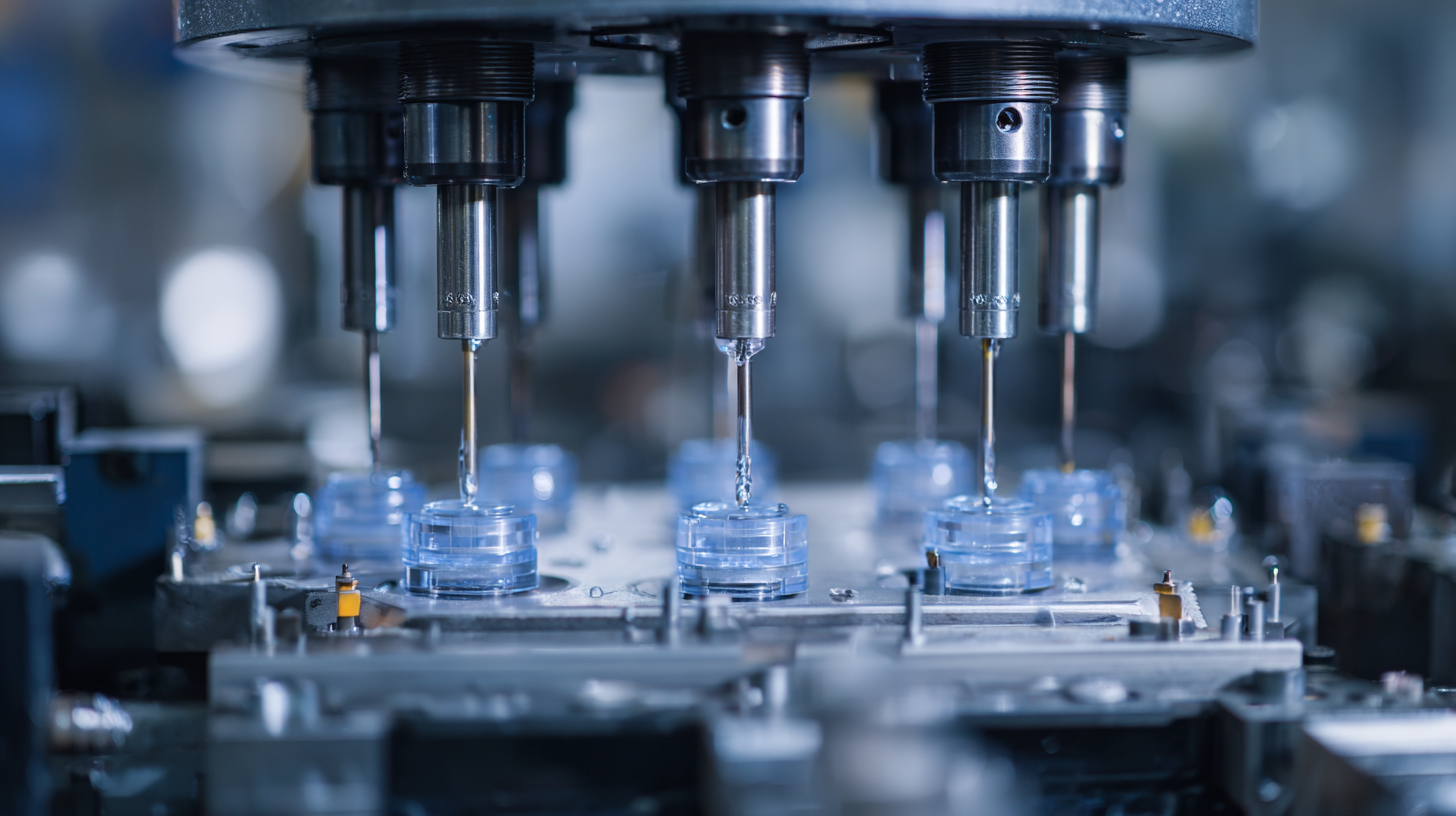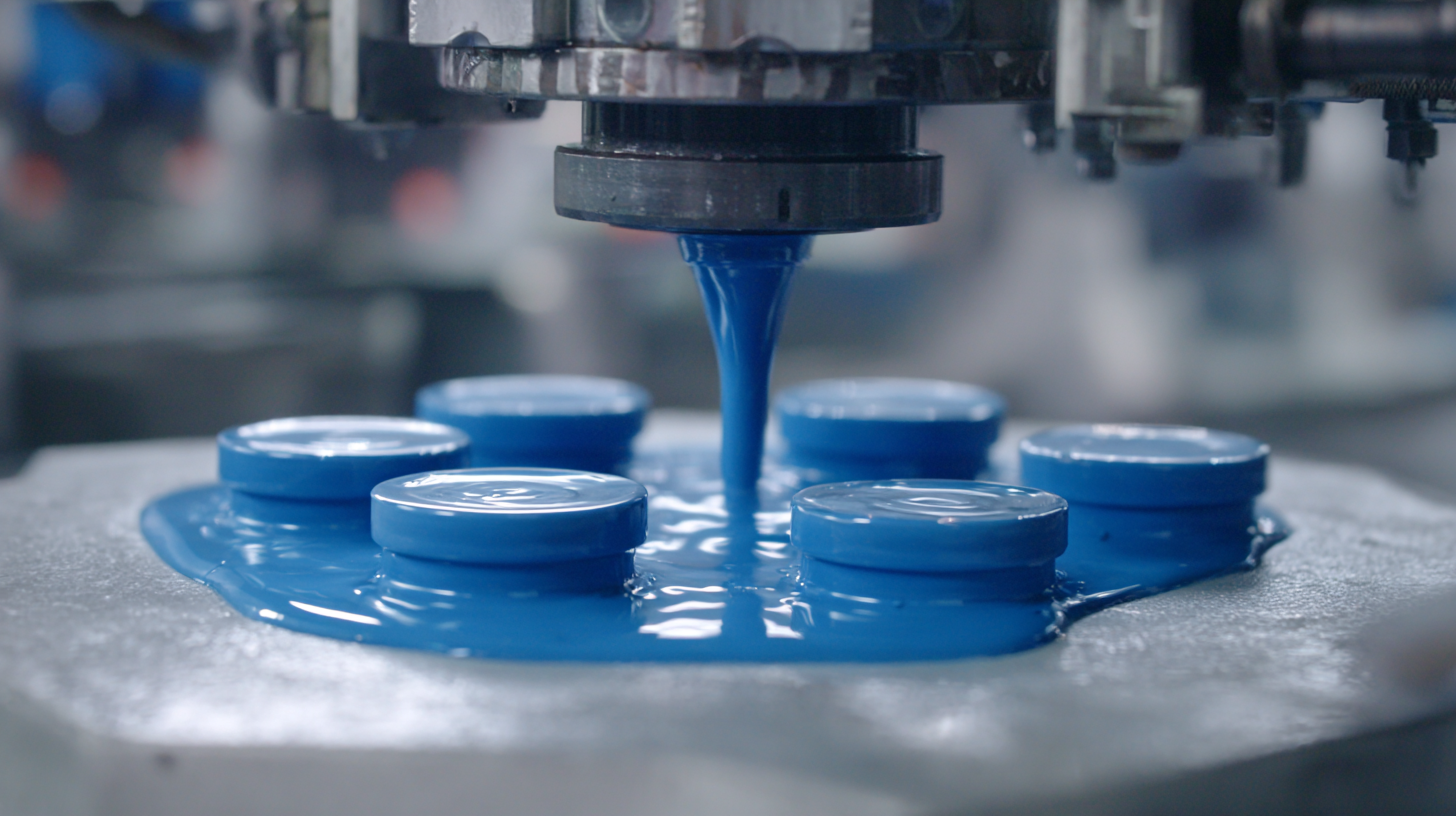The manufacturing landscape is evolving, with companies seeking innovative solutions to enhance product efficiency and reduce costs. Among these advancements, low pressure overmolding has emerged as a transformative process in advanced manufacturing. According to a recent report by Smithers Pira, the global market for overmolding is projected to reach $10.2 billion by 2025, with low pressure techniques significantly contributing to this growth. This method not only optimizes the material usage but also minimizes waste and energy consumption, aligning perfectly with the sustainability goals that many companies are pursuing today. Furthermore, studies indicate that low pressure overmolding can improve production cycle times by up to 30%, thus allowing manufacturers to respond more swiftly to market demands. As industries increasingly adopt these efficient production methods, understanding the implications and advantages of low pressure overmolding becomes crucial for stakeholders aiming to maintain a competitive edge.

Low pressure overmolding is revolutionizing the advanced manufacturing landscape by significantly enhancing product efficiency. Unlike traditional injection molding techniques that operate under high pressure, low pressure overmolding utilizes gentler forces to combine materials, which minimizes waste and reduces energy consumption. According to a recent industry report by Smithers Pira, this shift towards low pressure processes can lead to a 30% reduction in material costs and a 50% decrease in energy usage, thereby aligning with sustainability goals while maximizing production throughput.
To successfully implement low pressure overmolding techniques, manufacturers should consider the following tips. First, invest in modern molding equipment designed for low pressure applications to ensure optimal performance. Maintaining precise temperature control during the overmolding process is crucial; fluctuations can affect the material properties and overall product quality. Finally, collaborating closely with suppliers to choose compatible materials can enhance adhesion and durability of the finished products, providing a competitive edge in the market.
Furthermore, as industries prioritize operational efficiency, the adoption of low pressure overmolding is on the rise. A report from Research and Markets projects that the global overmolding market will grow at a CAGR of over 8% from 2023 to 2028, evidencing its pivotal role in future manufacturing strategies. Embracing these advanced techniques not only optimizes resource use but also positions companies at the forefront of innovation and sustainability in today's competitive environment.
| Technique | Material Compatibility | Efficiency Benefits | Applications | Typical Pressure Range (psi) |
|---|---|---|---|---|
| Low Pressure Overmolding | Thermoplastics, Thermosets | Reduced cycle time, Less material waste | Consumer Electronics, Automotive Components | 10 - 40 |
| Insert Molding | Metals, Plastics | Enhanced part integrity, Complex designs possible | Medical Devices, Industrial Parts | 20 - 60 |
| Overmolding | Elastomers, Rigid Plastics | Improved grip and cushioning, Cost-effective | Hand Tools, Household Items | 15 - 50 |
| Multi-material Molding | Mixed thermoplastics | Diverse functionality, Aesthetic enhancements | Cosmetics Packaging, Automotive Interiors | 25 - 70 |
 Low pressure overmolding is rapidly gaining traction in advanced manufacturing due to its numerous advantages over traditional molding techniques. One major benefit is the reduction of material waste, as this method uses significantly less pressure during the process. This not only minimizes excess material but also lowers the energy consumption associated with manufacturing, making it a more eco-friendly option. Additionally, the lower pressure allows for a wider range of materials to be combined, enabling manufacturers to create complex parts with enhanced functionality.
Low pressure overmolding is rapidly gaining traction in advanced manufacturing due to its numerous advantages over traditional molding techniques. One major benefit is the reduction of material waste, as this method uses significantly less pressure during the process. This not only minimizes excess material but also lowers the energy consumption associated with manufacturing, making it a more eco-friendly option. Additionally, the lower pressure allows for a wider range of materials to be combined, enabling manufacturers to create complex parts with enhanced functionality.
Another key advantage of low pressure overmolding is its ability to produce high-quality, precision components. The gentle application of pressure reduces the risk of defects, such as warping or voids, which are often encountered in high-pressure processes. This results in parts with excellent surface finishes and dimensional accuracy. Furthermore, the method promotes better adhesion between different materials, leading to stronger and more durable end products. As industries continue to seek innovative solutions for efficiency and sustainability, low pressure overmolding is poised to play a significant role in the future of advanced manufacturing.
Low pressure overmolding has emerged as a transformative technique in advanced manufacturing, showcasing its effectiveness through various successful implementations. One notable case is in the automotive sector, where a manufacturer utilized low pressure overmolding to create complex components that required both durability and lightweight characteristics. By melding thermoplastic elastomers with rigid substrates, they significantly reduced the overall weight of the parts while enhancing their resistance to environmental stresses, ultimately leading to improved vehicle efficiency.
Another compelling example can be found in the electronics industry, where a company adopted low pressure overmolding for encapsulating delicate circuit boards. This method not only provided an extra layer of protection against moisture and dust but also allowed for precise application, minimizing waste. The result was a set of components that ensured reliability in performance while offering cost savings through reduced material usage and streamlined production processes. These case studies illustrate the growing impact of low pressure overmolding in enhancing product efficiency across various sectors.
The landscape of advanced manufacturing is rapidly evolving, with low pressure overmolding emerging as a pivotal technology that enhances product efficiency. According to a report by Grand View Research, the global overmolding market is expected to reach $10.29 billion by 2027, highlighting a significant shift towards low-pressure applications that reduce material waste and energy consumption. This trend is not merely about cost reduction; it's also about precision and compatibility, as manufacturers increasingly adopt polymers that do not affect the integrity of existing components.
Innovations in low pressure overmolding technologies are leading to improved cycle times and enhanced product performance. For instance, a recent study noted that using low-pressure techniques can reduce cycle times by as much as 30%, allowing manufacturers to increase their output without sacrificing quality. As industries prioritize sustainability and efficiency, integrating advanced low-pressure systems will continue to play a crucial role in product development.
**Tips:**
1. When considering the shift to low pressure overmolding, assess your current manufacturing processes to identify areas where energy savings could be maximized.
2. Stay updated on the latest polymer technologies that complement low pressure techniques, as they can significantly enhance product performance.
3. Collaborate with suppliers who specialize in low pressure overmolding to ensure you have access to the latest innovations and best practices.
This chart illustrates the growth in global market value of low pressure overmolding technologies from 2019 to 2024, highlighting the increasing adoption and efficiency of these advanced manufacturing processes.
The integration of digital tools into the overmolding process represents a significant leap forward in advanced manufacturing. Utilizing software for simulation and design, manufacturers can optimize the alignment between different materials, ensuring a perfect fit and enhancing the overall integrity of the final product. This digital approach allows for real-time adjustments, minimizing waste and speeding up production times while maintaining high quality. By leveraging data analytics, manufacturers can also predict potential failures in the molding process, enabling proactive measures that save both time and resources.

Moreover, the rise of smart manufacturing technologies, such as IoT (Internet of Things) and AI (Artificial Intelligence), has transformed how overmolding is conducted. These tools facilitate better monitoring and control of machinery, resulting in improved efficiency and precision. For instance, in low-pressure overmolding, sensors can provide continuous feedback on temperature and pressure levels, ensuring that optimal conditions are maintained throughout production. This shift not only enhances the performance of the product but also empowers manufacturers to adapt swiftly to market demands and innovation cycles.






